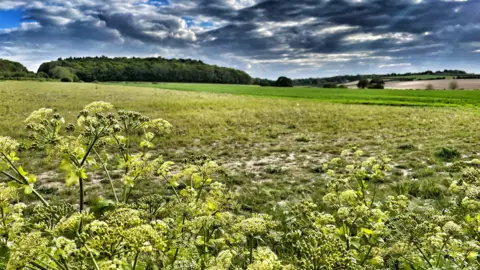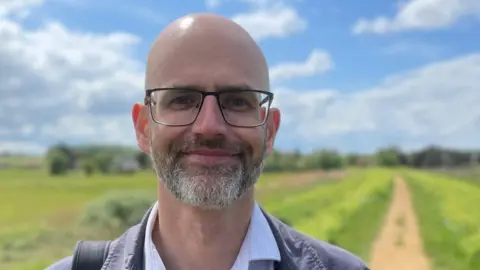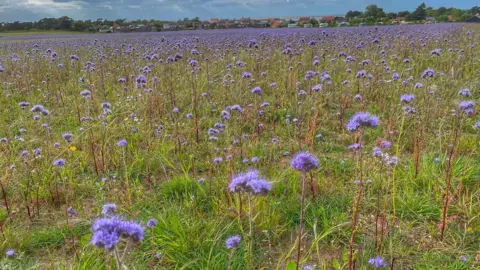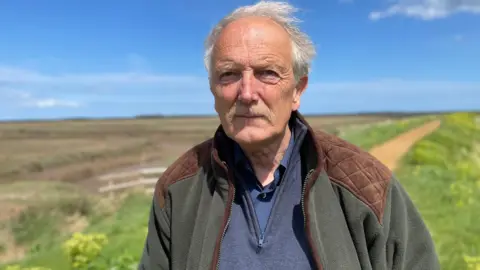Norfolk biodiversity audit lists coast's species
 Shaun Whitmore/BBC
Shaun Whitmore/BBCA "ground-breaking" biodiversity audit of more than 10,000 species in north Norfolk habitats has been created to help any decisions about their future.
The project by the University of East Anglia (UEA) looked at a 105-mile (169km) stretch of coastline.
It is hoped the information will help land managers and farmers protect and enhance habitats for wildlife.
Dr James Gilroy, ecology lecturer, said the key was to give the "huge database" to those who "really need it".
Among the variety of habitats are some of the largest areas of salt marsh in the country, sand dunes, freshwater grazing marshes and wetlands, and is home to 1,200 priority species.
 Shaun Whitmore/BBC
Shaun Whitmore/BBCAlthough much of nature conservation is evidence-based, typically this is restricted to large and charismatic species - particularly birds, the UEA said.
'Amazing landscape'
More than one million biological records of more than 10,000 species - including plants and invertebrates - were combined with other ecological datasets and knowledge from natural history experts and managers.
 Shaun Whitmore/BBC
Shaun Whitmore/BBCProf Paul Dolman, part of the UEA team, said the work had been "ground-breaking".
"This is the first time anyone has fully quantified the important wildlife of this amazing landscape and identified what it needs," he added.
"Crucially, by working with land managers throughout the study we were able to develop a plan of how to expand and enhance nature along the coast.
"Relatively small changes such as changing the management of drainage ditches, or more dramatic ones, like transforming low-lying arable to new grazing marsh and areas at risk of saltwater flooding into new salt marsh, will provide more space for many species, even as coastal habitats are squeezed by sea level rises."
The UEA worked with the Norfolk Coast Partnership - which manages the area on behalf of local authorities - and the North Norfolk Coastal Partnership, a working group of farmers, landowners, conservationists, environmentalists and government agencies.
Further contributing organisations to the audit included Norfolk Wildlife Trust, National Trust, Norfolk Rivers Trust, Norfolk Ornithological Association (NOA) and the RSPB.
 Shaun Whitmore/BBC
Shaun Whitmore/BBCDavid Lyles, chairman of the North Norfolk Coastal Group, is also a farmer.
"I come from a generation that probably did quite a bit of damage to nature," he said.
"But we didn't realise it, we thought we were doing best practice."
He wants to use the audit to help decide how best to improve the diversity of the area.

Find BBC News: East of England on Facebook, Instagram and Twitter. If you have a story suggestion email [email protected]
